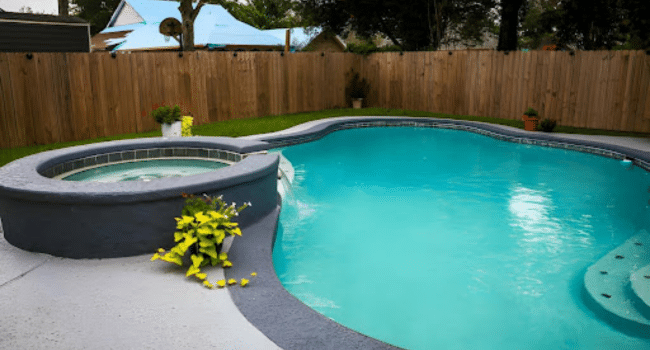Table of Contents
Building a concrete pool on your property is an important project that requires special knowledge and professional skills to get the safest and best pool for your home. Inground concrete pools are a place of amusement and relaxation for you and your family, bringing much joy to your house. You may wonder how to build a concrete pool: the depth, the shape, the decoration and all other details. Visit this website, which will give you the best ideas to create your pool with the right professional. This article will help you understand the concrete swimming pool construction process.
Inground concrete pool design and permit
A concrete pool is considered a room on your property, and you must get a permit before construction begins. You must create a conceptual design that determines its size, shape, and depth for the permit.
This is a crucial step; you must determine your needs and the possibilities applicable to your land. The best way is to discuss it with your pool builder, who will give you the best advice.
A structural engineer or pool contractor will create engineering plans according to your needs, which may include the installation of a temporary pool fence for safety. With his expertise, the professional will advise you if any upgrade on your design or reinforcement needs to be done on your property. Indeed, considering property lines, topography, utility lines, pool dimensions, location and materials, filtration system, electricity, and safety measures can bring up new elements.
Once the planning is finished and your conceptual design is settled, you can submit your permit to your local building department.
Building process
Once the paperwork is done, the construction can start. Let’s explain the different steps that you should expect for your concrete pool creation:
- Excavation: it is time for digging! The hole will appear with the shape and depth chosen. The pool site will be graded and compacted; it is essential for your building base to be solid and stable.
- Formwork: a wooden or metal formwork will shape the pool’s outline for leak prevention.
- Rebar grid: the steel framework reinforces your structure, ensuring resistance and solidity. A good rebar grid must provide safety and longevity to your concrete pool. The spacing and alignment of the steel bars must follow the engineering specifications.
- Plumbing and electrical work: this step will permit the water to enter your pool. Your plumbing pipes and system will be installed. All electrical components, such as filtration systems, lights, and heating elements, will be installed.
- Shotcrete application: a mixture of sand and concrete is applied to the steel reinforcement to provide the best structural strength and durability to your pool structure. A professional will manage this critical step, shaping the pool structure. The concrete will take twenty-eight days to cure. Water must be sprayed on all concrete surfaces at least three times a day during this time.
- Tile and coping installation: a sealant must be applied on all surfaces to ensure the best waterproofing of your concrete pool. Then, you will decorate your pool with tiles and finish with coping around the pool’s edge.
- Fill up your pool: finally, water can come into your pool, but you cannot swim yet. It is time to check all pool equipment functioning: pump, filtration, balanced chemical, and lighting.
- Final check: your concrete builder company will do a final inspection to ensure your pool’s safety and well-functioning. Then, you and your family can enjoy your first plunge in your brand-new inground concrete pool!
Concrete pool construction is a significant project; you must choose the right professional to get the best work. Maintenance and care must be done, such as pool cleaning and servicing equipment.
Read more on KulFiy
The Rise of Inflatable Wildlife: A Look at Animal-Shaped Pool Floats
Reasons to Choose Calimingo as Your Local Los Angeles Pool Contractors
